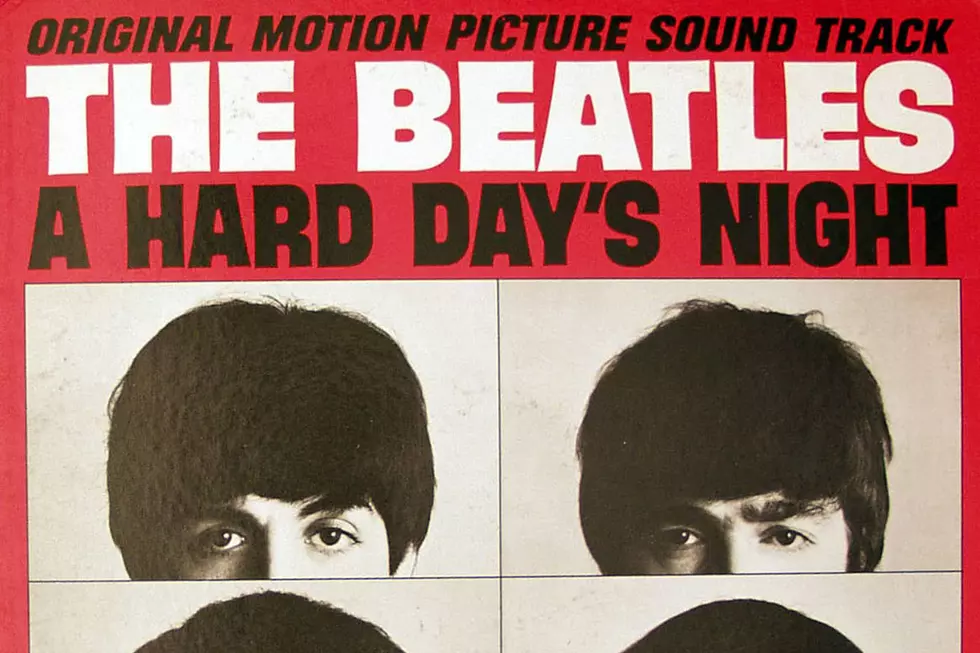The Beatles Cap Their Masterpiece With ‘A Day in the Life': The Story Behind Every ‘Sgt. Pepper’ Song
Three months after they started the sessions for Sgt. Pepper's Lonely Hearts Club Band, the Beatles wrapped recording on what would become the final song on their landmark 1967 album.
It all started back on Nov. 24, 1966, when the band began work on John Lennon's "Strawberry Fields Forever." On Feb. 22, 1967, a little more than a month after they started sessions for the LP's final track, "A Day in the Life," the Beatles added the most famous final chord in modern music history to the song, completing one of the most ambitious cuts on their most ambitious album.
Unlike most of the songs on Sgt. Pepper, "A Day in the Life" truly earned its Lennon-McCartney songwriting credit (an agreement the Beatles' two chief composers used from the start of their partnership). Lennon was responsible for most of it, but the track's middle section was brought in by Paul McCartney.
But like most of the songs on Sgt. Pepper, the song was pieced together over time, weaving different sources, structures and styles into a timeless classic.
But before we get to the song, the LP runs though its title track again, this time in a 78-second "Reprise" that piles on instruments and adds a speedier tempo to the number that launches the record. This version was recorded on April 1, 1967, two months after the other one, and serves as a closing to the Sgt. Pepper concept, with applause at the end of the song fading into "A Day in the Life," which can almost be taken as an epilogue or coda to the LP.
Either way, the segue, into the somber acoustic guitar strums that start "A Day in the Life," sets up the Beatles' all-time greatest song in an unassuming way. By the time it wraps up five and a half minutes later, fans are treated to one of the most glorious pieces of pop music ever recorded.
It all started sometime in January 1967, when Lennon wrote the basic melody and most of the words, which were based on some real events. Foremost was the death of Tara Browne, a friend of Lennon and McCartney's and the heir to the Guinness beer company, who died at the age of 21 after he crashed his car. Lennon came up with lines to "A Day in the Life" after reading about the accident in the Daily Mail.
That same paper included an article about the number of holes in the road in Blackburn, Lancashire: 4,000, which Lennon incorporated directly into the song. Coupled with drug references (the Beatles were at the height of their LSD experimentation at the time) and McCartney's middle-eight section (inspired by school-bus rides when he was a kid), "A Day in the Life" was a pop-art collision of words and music that fell together as a timeless classic.
Then came the final touches. A 40-piece orchestra was brought into EMI Studios on Feb. 10, 1967, to bring to life Lennon and McCartney's musical visions, which they mapped out as an improvisational avant-garde buildup. Producer George Martin wrote a score based on those ideas, after insisting that the classically trained musicians wouldn't be able to play a piece like the one they envisioned, and the results were stitched together from four different recordings, giving the orchestral swells the sense of heightened drama the song's composers wanted.
But it wasn't over yet. Twelve days later, Lennon, McCartney, Ringo Starr and Beatles assistant Mal Evans lined up behind three pianos, and with Martin playing a harmonium, they all struck an E-major chord at the same time. They let it ring out for more than 40 seconds as the tape machine was turned up to catch every second of the fading note.
If you listen closely, you can hear various noises from within the studio, like a chair and movement from the people gathered in there. After 34 hours, "A Day in the Life" was finally complete. But it's not the last thing heard on Sgt. Pepper. On April 21, they recorded a run-out groove made up of nonsense words that, following an almost indiscernible dog whistle, played on and on and on ... or until listeners got up and took the record-player arm off the record (or at least U.K. listeners; the run-out groove wasn't included on U.S. pressings of the LP). The nine-hour session -- the LP's final one -- yielded an appropriately bizarre end to an album that catapulted pop music into art.
"A Day in the Life" was almost immediately praised upon its release with the Sgt. Pepper's Lonely Hearts Club Band album on June 1, 1967. But not everyone was a fan. The BBC banned the song until 1972 on objections that the line "I'd love to turn you on," as well as others, was drug-related (It was. Lennon and McCartney admitted as much in later interviews.)
Like all of Sgt. Pepper's tracks, "A Day in the Life" was never released as a single. But it became one of their most popular songs nonetheless and a cornerstone recording in their remarkable catalog. It remains one of the most significant songs ever recorded. It was a game-changer at the time, and it still has the ability to amaze based on its technological achievements and pure musicality. It was a once-in-a-lifetime record, and a most fitting finale to the Beatles' masterwork.
42 Awesome Takes on the Beatles’ 'Sgt. Pepper's' Album Cover Art
More From Ultimate Classic Rock









